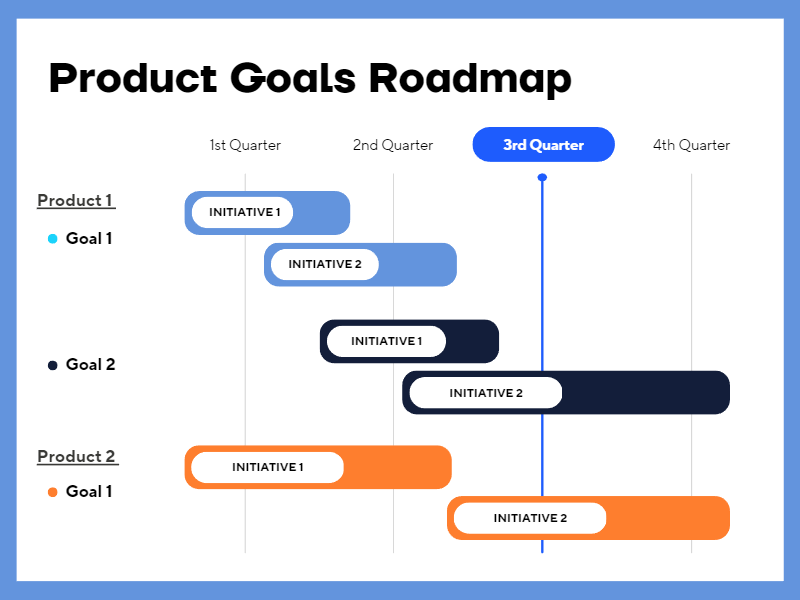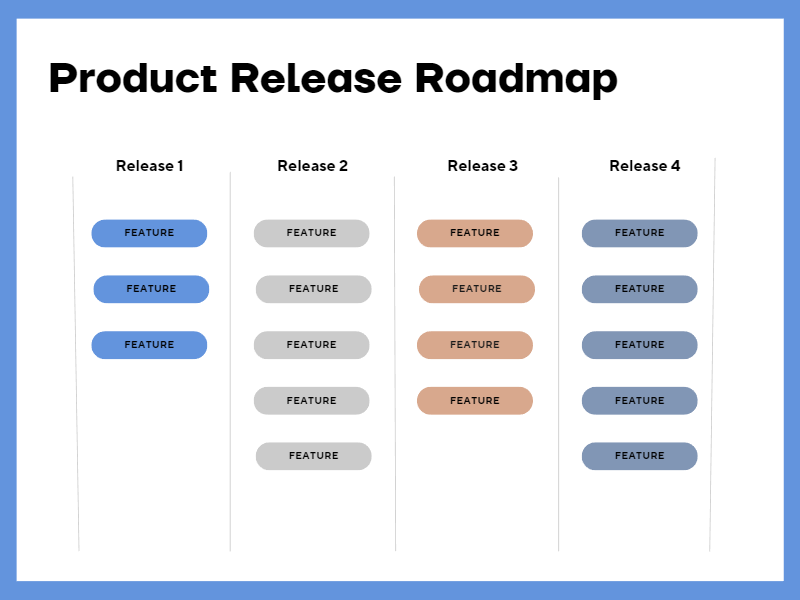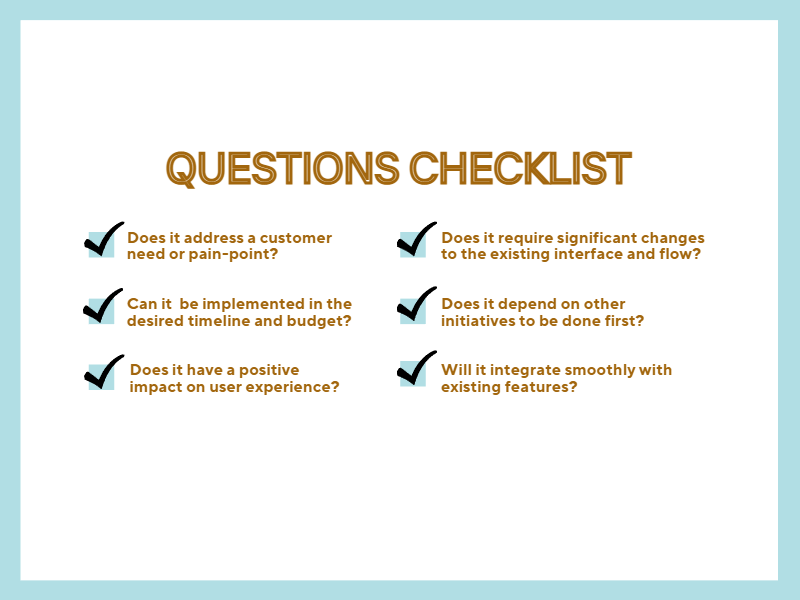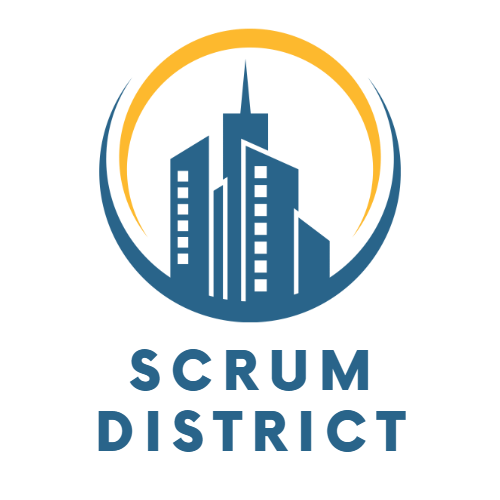Do you ever feel like your product team is working hard but not getting anywhere? Are you struggling to communicate the product strategy to stakeholders? A clear product roadmap can help you align your team’s efforts and achieve your goals.
But creating a clear roadmap can be challenging. You need a deep understanding of the market, user needs, and business goals.
In this post, you’ll find out what an Agile product roadmap is and how to create one that is easy to understand and follow. Let’s dive in.
What is an Agile Product Roadmap?
An Agile product roadmap is a visual representation that outlines the steps you’ll take to achieve your product goals. Your roadmap should be consistent with your strategy and aligned with the product vision.
In my visual representations of the roadmap, I include the goals, the initiatives that support those goals, the features needed, and the timeline to implement the work. Let’s see how you can keep things clear:
- If you work in a company that has multiple products or multiple areas of a product handled by multiple product teams, you will want to keep everyone aware of the progress of each product.
In this case, I prefer to have a roadmap that contains high-level details about how the work is advancing, that’s shared between the other product owners, stakeholders, and other departments. This includes the product goals, the initiatives that support the goals, and the timeline as you can see below.

- The second roadmap contains information that is more relevant for the development teams and product owners. Such as the features associated with the current initiative, split by releases.

Differences between the roadmap for startups and the roadmap for mature products
Startups and mature products are in different stages of the development life cycle, so their roadmaps can differ significantly.
For example, when you build a roadmap for a startup, you’re focusing on finding the right market fit, identifying the right features, and experimenting with different strategies to attract customers. This makes the roadmap more flexible as the company adjusts to feedback from early adopters on the market.
Mature products on the other hand have an established customer base and a clear understanding of the value proposition. So, a roadmap for a mature product is focused on maintaining and enhancing the product’s market position, optimizing features, and addressing customers’ needs and pain points.
The mature product roadmap is usually more structured, and data-driven as the company leverages customer feedback, market research, and analytics to make informed decisions.
The following point will cover everything you need to know in order to create a roadmap for a mature product.
How do I build a Product Roadmap?
I identify the initiatives that I’ll add to the product roadmap
When it comes to identifying the right initiatives for my product, I always start by having a clear understanding of my product goals and strategy before creating my roadmap.
This helps me ensure that the initiatives and features I add to my roadmap are guided by my goals and strategic decisions. In these posts about product goals and product strategy, I covered everything you need to know about how to find the right goals and strategy for your product
To make sure that I’ve identified the right initiatives, I take a few steps.
- Firstly, I gather feedback from customers through the support, sales, and marketing teams. I also research my competition to find unique selling points. Check out this post for more helpful tips about product discovery.
Additionally, I like to talk directly with users through interviews or surveys to gain valuable insights into their needs and desires. Product discovery is an ongoing process that I believe should be done at every stage of the product life cycle. - Once I’ve gathered the necessary information, I schedule a brainstorming session with key stakeholders, such as UX designers, technical leads, and other internal team members who can provide valuable feedback and insights. During this session, I present my initial ideas for the roadmap and we discuss the benefits, possible risks, and success metrics associated with each initiative.
- Finally, I prioritize the initiatives and add them to the desired timeline. When doing so, I consider factors such as the impact on users, technical feasibility, and business goals.
A set of questions that I use before deciding on adding something to the roadmap are the ones below.

I find the features that will support the initiatives
I focus on one initiative at a time by considering the priorities we have established in the initial step.
This is a good time to have a user story-mapping session with the team. In these sessions, the product owner or the product manager, the UX designer, and the development team should be present. Let’s see how such a session should unfold:
- To start, I present the context to the participants. They should know what goals we should achieve with the initiatives we have on our roadmap.
- Then, we begin the brainstorming session and find the necessary features aligning with each initiative. We add the features to a visual board and sometimes split the extensive features into smaller items that can be translated into user stories. Or I do this by myself after the brainstorming session and ask my team for feedback.
- We prioritize the items we have added to the board. I like using the MoSCoW technique and applying it for the features and the small items that resulted. Given our resources and constraints, considering the feasibility of the features we’ll build is essential. If any refactoring is required, we may also need to consider extending the timeline to fit this piece of work.
- During the session, the development team will provide a high-level estimation for the features. This will help me understand how to plan the releases. The estimation may change as the team progresses with the project and learns more. So, remember that this is not a set-in-stone plan but something that we will work hard to accomplish.
Why should I create a Product Roadmap?
Creating a roadmap is an essential step in developing and launching a successful product. Here is why:
- It helps with the product development team and stakeholders’ alignment around a common set of goals and objectives.
- The product roadmap is a high-level view of the product’s development. This enables stakeholders to identify potential issues and make informed decisions.
- It helps to manage stakeholders’ expectations by outlining what features we plan to include in each release and when they will be delivered.
- It helps us prioritize features and initiatives based on their importance and the potential impact on the business.
Who owns the product roadmap?
The ownership of the roadmap can vary depending on the organization and the product development process.
In most cases, the product manager is responsible for creating and maintaining the roadmap. However, some companies have opted to replace the product manager role with the product owner role in the Scrum framework. This decision may be due to the specific nature of the product development process of each company.
In cases where both product managers and product owners work together on a product, they can collaborate on building the roadmap.
Product Roadmap best practices
How you manage the roadmap can benefit or damage the success of your product. So, I’ve got some tips for creating a great roadmap.
- Create a roadmap that is aligned with your company’s vision, goals, and strategy. This way you ensure that the product development efforts are focusing on the right areas.
Let’s say your company’s goal is to provide a user-friendly project management tool for small businesses. But your roadmap only contains initiatives that benefit enterprise companies. This is a clear example of misalignment between the roadmap and the company’s objectives. - Prioritize initiatives based on their impact on the product and the company.
- Keep the roadmap flexible and adaptable to changes that appear in the market and in the company’s strategy. Regularly make updates to reflect changes in priorities.
- Share the roadmap with everyone who should be aware of the product’s progress. This includes developers, marketing, design, sales, and customer support.
Now let’s talk about some things you want to steer clear of doing.
- Don’t include too many details. Product roadmaps should provide a high-level view of the product development plan. Avoid adding too many details or specific implementation plans because it will become difficult to update it every single time you make a change.
- Don’t make unrealistic promises. You should set realistic expectations and avoid promising features that cannot be delivered in the given timeline.
- Don’t ignore customer feedback. This is one of the best places where you can get information to build a successful roadmap.
- Don’t create a complex roadmap. Stakeholders should easily understand what your plans for the product are and stay informed about the progress.
Conclusions
Creating and maintaining a well-structured roadmap is crucial for any organization that wants to achieve its goals and succeed in the market.
Using online roadmap tools can also streamline the process and facilitate collaboration among team members. I personally prefer working with Miro, but there are other options you can choose from, such as Aha!, Roadmunk, Jira, or Product Plan.
What are the steps you follow to build a product roadmap?
Let me know in the comments section below.

